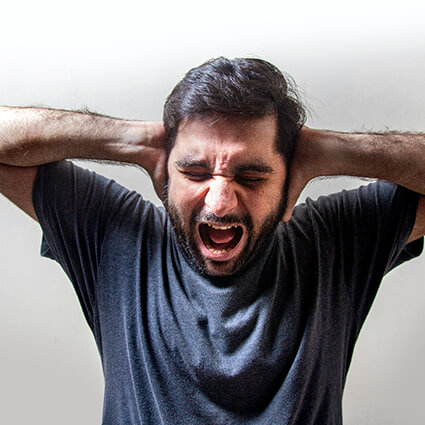Introduction
 A recent study was done to discover the impact of myofascial release and craniosacral therapy for people with chronic migraine headaches. This 2024 study was conducted in the neurology department of the ALKU Hospital in Turkey. Their primary objective was to note changes in quality of life, pain levels and range of motion.
A recent study was done to discover the impact of myofascial release and craniosacral therapy for people with chronic migraine headaches. This 2024 study was conducted in the neurology department of the ALKU Hospital in Turkey. Their primary objective was to note changes in quality of life, pain levels and range of motion.
Extremely Common and Underdiagnosed
Migraine is the second most common headache type, and the third most common cause of disability in those under 50, according to this study.1 This type of pain causes physical as well as mental and emotional disturbance. It increases sympathetic activity, meaning the stress responses are heightened, increasing sensitivity to pain, light, noise, and irritability towards common stressors that might be otherwise overlooked. It lowers the ability to think clearly and quickly, mirroring fatigue and confusion.
Myofascial Techniques (aka Massage)
Neck pain is a common complaint in people with headaches and migraines. The presence of trigger points in the shoulders and neck creates pain patterns that move into the face and head. These are very specific patterns that help guide the therapist in finding the problem areas, which are not always where the pain is actively felt.
The difference between a knot in a muscle and a trigger point in the myofascia (myo = muscle, fascia = connective tissue) is that a trigger point gets so tight that it cuts off its own circulation. The reduction in blood flow means that metabolites start to build up, creating additional tissue irritation. When trigger points are released and blood flow is restored, the pain in the referral area abates pretty much instantly.
It is already well established that myofascial techniques (MFT) lower the level of pain and frequency of onset of migraines,2 even though a migraine is not treated directly by soft tissue work. Why? Because a migraine is a neurological event. A tension headache, even one as severe as a migraine, is cultivated in the soft tissues. Classically, a tension headache is a trigger point headache. These are my favourite kind, since they are relatively quick and easy to dispel.
How CST Can Help
This study set out to see if Craniosacral Therapy (CST) would be as effective as myofascial techniques as compared to evidence-based medications for migraines that were either already being taken or as determined by the neurologist in the study. They found that both, and either of these, were effective.
They also sought to establish a CST protocol for migraine treatments. This protocol appeared to be a non-specific CST treatment, which was applied for 20 – 30 minutes twice a week for 4 weeks. Each CST protocol was applied in a general way, decompressing the joints in the head and relaxing the fascial connections between the bones.
Conclusions
Although the sample size was small (three groups of about 25 people in each) and with the short duration, the researchers concluded that CST and MFT techniques both reduce migraines, TMJ pain, drug consumption and functional disability. It also helped to increase range of motion in the neck region.
Interestingly, there was an unexpectedly high number of people in the study that also had temporomandibular dysfunction (TMD), and this pain and dysfunction was also reported to have reduced during the period of study. This information was not part of the study and only surfaced during pain reporting, but it will merit further looking into.
CST is often used as an add-on to massage. The upper back, neck and shoulders are worked first using MFT (massage) to eliminate trigger points, then CST is used to go deeper into the joints of the skull. This becomes gentler and is perceived more as pulling and holding than the press and glide of massage. The results of this study suggest that CST alone could be considered in migraine treatment.
Give us a call, and ask for an appointment with Carol, as she practices both CST and MFT. Her 20 years of experience in headache reduction, even before studying CST, has been a great benefit to her clients over the years.
References
1. Araci A, Özşimşek A, Yuluğ B, Karaçay E. Comparison of Craniosacral Therapy and Myofascial Relaxation Techniques in People with Migraine Headache: A Randomized Controlled Study. J Chiropr Med. 2024 Sep;23(3):114-126. doi: 10.1016/j.jcm.2024.08.010. Epub 2024 Oct 29. PMID: 39670206; PMCID: PMC11632789.
2. Carvalho GF, Luedtke K, Szikszay TM, Bevilaqua-Grossi D, May A. Muscle endurance training of the neck triggers migraine attacks. Cephalalgia. 2020;41(3):383-391. doi:10.1177/0333102420970184
